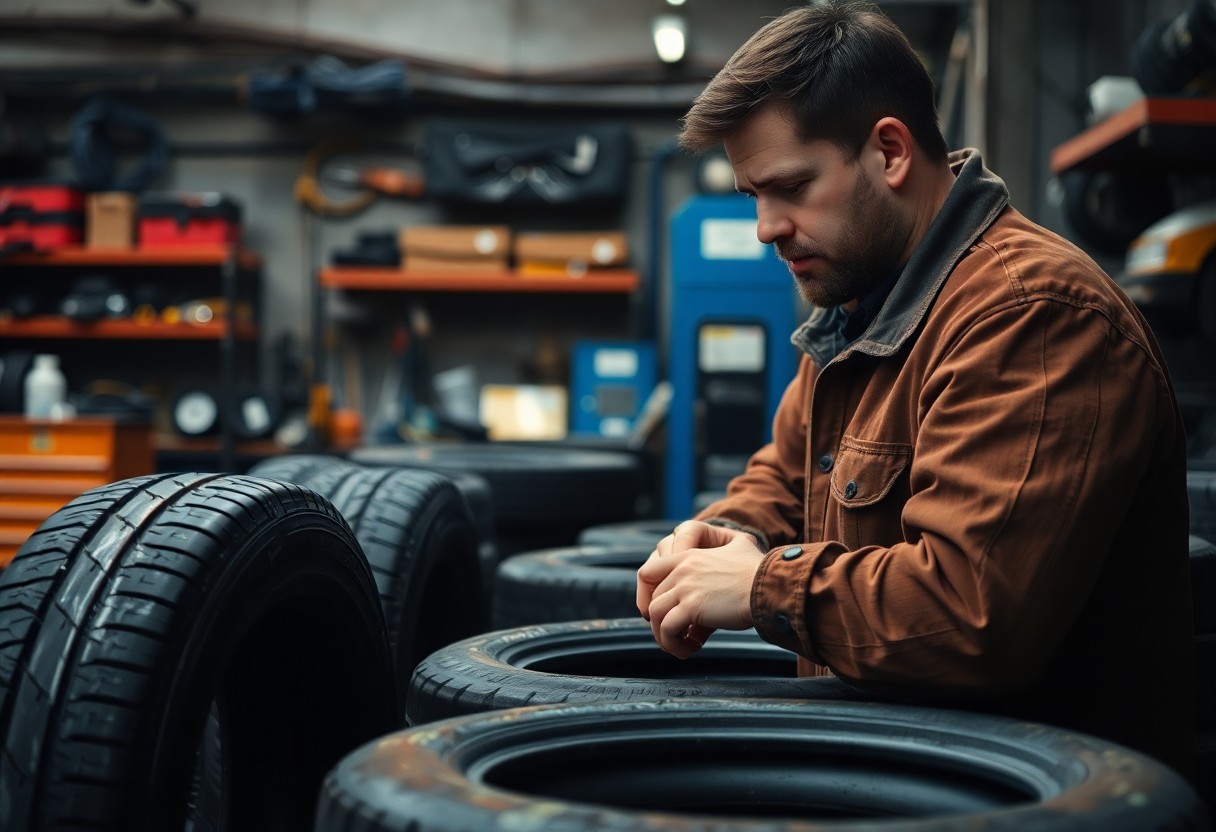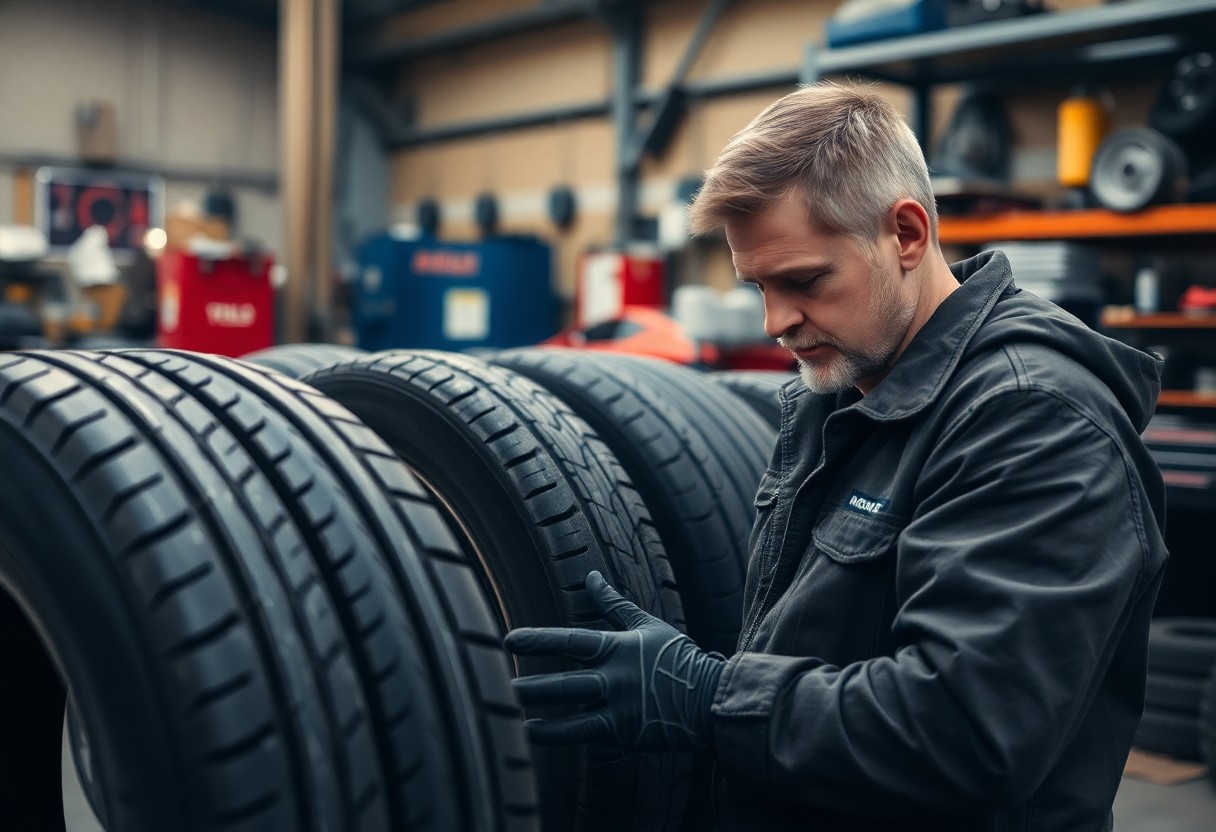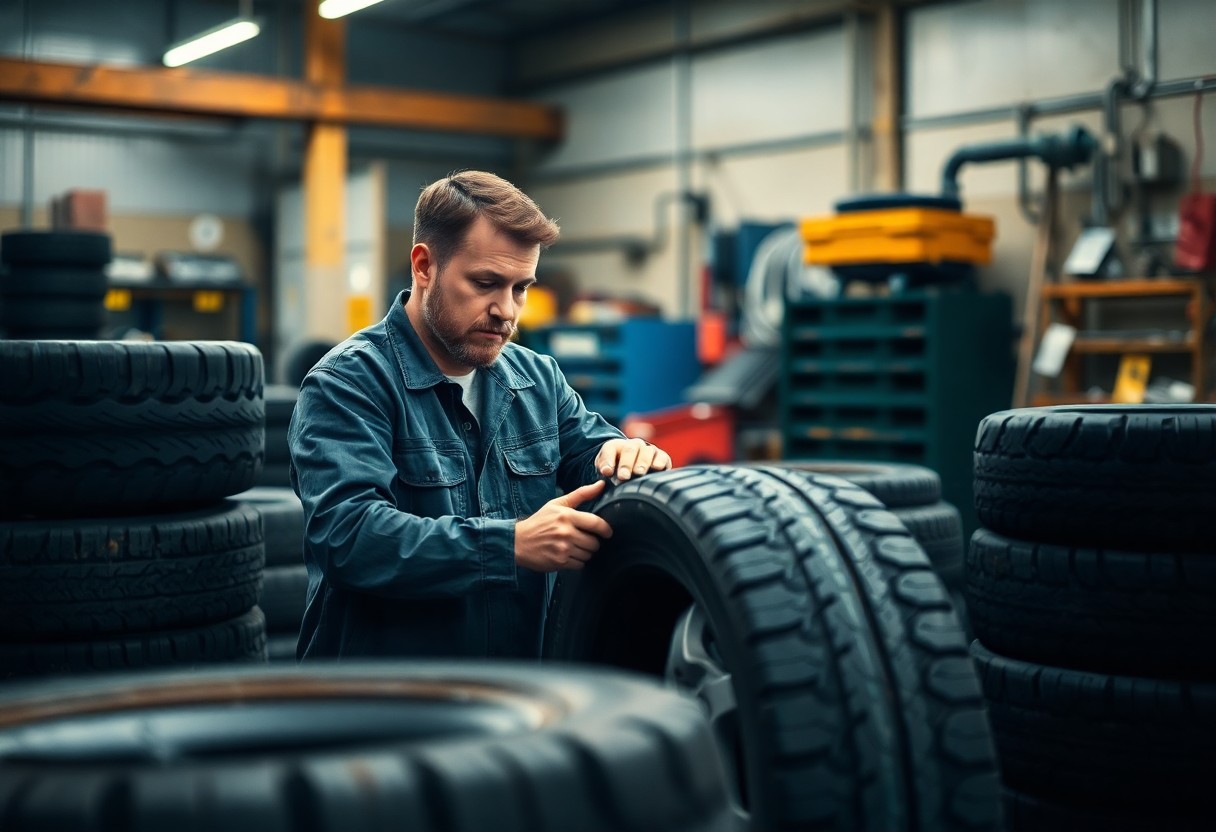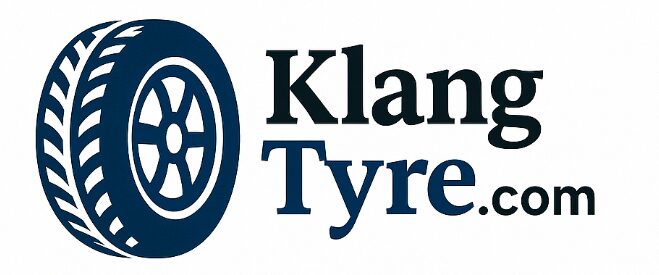Tyres play a vital role in your vehicle’s safety and performance. You might wonder if used tyres are a safe choice for your car. While they can be a cost-effective option, there are significant risks associated with their use, such as decreased tread depth and internal damage that may not be visible externally. In this blog post, Klang experts will share the truth about the benefits and dangers of used tyres, helping you make informed decisions for your safety on the road.
Key Takeaways:
- Used tyres can be a viable option, but their safety heavily depends on their condition and history.
- Inspect for visible signs of damage, including cracks, bulges, and uneven wear, before purchasing used tyres.
- A reputable dealer should provide detailed information about the tyre’s previous use, age, and any repairs made.
- Tyres older than six years are generally considered less safe, even if they appear to be in good condition.
- Check for the tread depth; used tyres should have sufficient tread to ensure grip and stability on the road.
- Your vehicle type and driving habits also play a significant role in determining whether used tyres are a safe choice.
- Consulting with tyre experts can provide valuable insights tailored to your specific needs and safety requirements.
The Silent Dangers Lurking in Used Tyres
Used tyres may seem like a cost-effective choice, but hidden risks can compromise your safety. Over time, tyres suffer from degradation due to various factors such as exposure to UV rays, moisture, and temperature fluctuations. These conditions may lead to unseen damage, such as sidewall cracking or tread separation, which can affect performance and increase the risk of blowouts. Moreover, the history of a used tyre, including previous accidents or repairs, can significantly impact reliability, making it vital to thoroughly inspect before considering a purchase.
Common Defects and Wear Patterns
Used tyres often exhibit telltale signs of wear and tear that can signal critical underlying issues. Common defects include uneven tread wear, which may indicate improper alignment or inflation, and the presence of bulges or cuts that compromise structural integrity. Additionally, identify patterns such as “saw-tooth” edges that can impair traction or performance. Evaluating these characteristics while examining tyres is vital to safeguard against accidents on the road.
Real-World Incidents: When Used Tyres Go Bad
Instances of catastrophic tyre failures due to the poor condition of used tyres are more prevalent than you’d expect. For example, a study highlighted that over 30% of tyre-related accidents involved tyres that were worn or damaged, often purchased second-hand. In many of these cases, drivers experienced blowouts or loss of control while navigating high-speed situations or bad weather.
Consider a case where a family of four was travelling on a busy highway when one of their used tyres blew out, causing the vehicle to roll multiple times. Thankfully, they survived, but the incident served as a wake-up call about the true risks of buying used tyres without thorough evaluation. The repercussions can be severe, influencing not just the driver’s safety, but also that of passengers and fellow road users. Investing in new tyres or ensuring careful inspection and verification of used ones is critical for peace of mind and security on the road.

The Expert Standards: What Makes a Used Tyre Safe?
Your safety on the road significantly relies on the condition of your tyres, especially when considering used options. Safety experts from Klang emphasize that a safe used tyre must meet stringent standards. This includes the overall tread depth, absence of sidewall cracks, and no visible structural damage. Additionally, a well-maintained tyre should have a manufacturer’s date no older than six years, as aged rubber can compromise performance, no matter the tread level.
Inspection Criteria from Klang Professionals
Klang professionals conduct thorough inspections to ensure a used tyre is safe for use. They look for consistent tread wear, proper inflation, and absence of bulges or bubbles that indicate internal damage. Any signs of uneven wear may point to misalignment issues, which need addressing before your tyres hit the road. Moreover, check the depth; a minimum of 3mm is often recommended for safe performance in wet conditions.
Regulatory Guidelines and Certifications
Regulatory bodies and industry standards dictate that used tyres must comply with specific safety certifications to be deemed roadworthy. You’ll find that used tyres carrying certifications from recognized organizations reflect adherence to rigorous safety regulations, ensuring they have passed thorough assessments for durability and performance.
Adhering to regulatory guidelines is necessary for maintaining safety standards across the board. For instance, in Malaysia, used tyres must adhere to standards set by the Road Transport Department (JPJ), which can include reminders about age restrictions and mandatory inspections. You should also look for markings or labels confirming that tyres have passed quality tests, showing that they can handle various driving conditions without risk, thus ensuring your safety and peace of mind.

Cost vs. Safety: The Economics of Buying Used Tyres
Choosing between used and new tyres often boils down to immediate cost savings versus long-term safety and performance. While used tyres may appear economically appealing due to their lower price tags, they can lead to hidden costs if they don’t meet safety standards. These hidden costs could manifest as frequent repairs or the necessity to replace poorly chosen tyres sooner than expected, ultimately turning those savings into expenses.
Assessing Long-Term Value versus Initial Savings
When weighing the options, assess long-term value rather than just the upfront price. Investing in high-quality new tyres can enhance fuel efficiency, provide better traction, and extend your vehicle’s lifespan. The short-term savings from used tyres might not justify the potential risks and performance drawbacks you could face in the long run.
The Financial Risks of Compromised Safety
Opting for used tyres can introduce significant financial risks stemming from compromised safety. For instance, a blowout while driving can lead to serious accidents, resulting in costly repairs, medical bills, or even loss of life. The implications of a damaged tyre can far exceed the initial savings you might have enjoyed, highlighting the potential hidden costs associated with prioritizing price over performance.
The repercussions of choosing unsafe used tyres extend beyond simple repair costs. Insurance premiums might increase following an accident, and your vehicle’s resale value could also suffer if you consistently use subpar parts. A comprehensive safety evaluation is necessary, as injuries and legal repercussions resulting from tyre malfunctions can quickly escalate into lifetime economic burdens. Always prioritize your safety and consider the broader financial implications when deciding whether to purchase used tyres.
Balancing Sustainability with Road Safety
Choosing used tyres can be a step towards sustainability, but it should never come at the expense of safety. You can support environmentally friendly practices by opting for recycled products, yet ensuring that these tyres meet safety standards is vital. The balance lies in knowing when to invest in a new pair versus when a used option is suitable, especially if the environmental benefits align without compromising your vehicle’s performance.
Environmental Impact of Used Tyres and Recycling
The environmental footprint of tyres is significant, with over one billion disposed annually across the globe. Tyres can take hundreds of years to decompose, leading to serious pollution issues. Recycling initiatives can transform repurposed tyres into useful materials for road construction or rubber chips for playgrounds, substantially reducing landfill waste and benefitting communities. Your choice to use recycled tyres can play a part in lowering the carbon footprint.
Safe Disposal Methods for Decommissioned Tyres
Decommissioned tyres must be disposed of properly to avoid environmental hazards. Local recycling centers and programmes for tyre reclamation are necessary for handling these products. By collaborating with certified disposal facilities, you can ensure that tyres are processed safely, mitigating the release of toxins and controlling debris. Many regions even have designated drop-off locations, making it easy for you to contribute to responsible waste management.
Exploring your options for safe tyre disposal could lead you to several innovative solutions. Many governments offer *tyre recycling initiatives* that not only process tyres but also provide community incentives. For instance, some companies regenerate materials to create rubberized asphalt, while others manufacture energy-efficient products from old materials. Driving your old tyres to a recycling plant rather than discarding them can foster a responsible culture, sparking initiatives that support environmental health and road safety.

Consumer Choices: Tips for Navigating the Used Tyre Market
Making informed decisions in the used tyre market requires due diligence and knowledge. To ensure your safety and financial investment, consider the following tips:
- Assess the tread depth: Ensure it meets legal minimums for your area.
- Check for uneven wear: This could indicate alignment issues.
- Look for age: Tyres older than six years may present safety concerns.
- Examine for damage: Cracks, bulges, or punctures can pose risks.
- Verify certifications: Ensure they meet safety standards.
Knowing what to look for can make a significant difference in finding reliable used tyres.
Questions to Ask Before Purchasing
Before committing to a purchase, ask the seller about the history of the tyres. Inquire about previous usage, any repairs done, and the reasons for selling. Additionally, request documentation and ensure the used tyres meet safety and regulatory standards. Understanding the tyre’s background allows you to make a more informed decision.
Red Flags and Warning Signs in Used Tyres
There are various indicators that suggest a potentially dangerous used tyre. Look out for severe wear patterns, cracks, or bulges, as these can compromise the tyre’s integrity. If the seller is unwilling to provide detailed information about the tyre’s condition or history, that’s another significant warning sign. Additionally, if you notice any unusual smells or feel excessive vibration during a test drive, it’s best to walk away.
Tyres exhibiting uneven wear might not just indicate alignment issues—they could lead to reduced traction and increased stopping distances, jeopardizing your safety. A lack of tread depth can lead to hydroplaning in wet conditions. Be cautious if the seller offers a low price without valid reasons, as this often points to hidden problems. Prioritize your safety and invest in tyres that have been thoroughly inspected and verified, avoiding any that leave you with uncertainties.
Summing up
From above, it is clear that while used tyres can offer cost savings, you must assess their safety thoroughly before making a decision. Factors such as tread depth, visible damage, and age play significant roles in your tyre’s performance and safety on the road. Engaging with experts can provide you with valuable insights to ensure your choices align with safety standards, protecting you and your passengers. Ultimately, being informed allows you to make a decision that prioritizes both your budget and your safety.
FAQ
Q1: Are used tyres safe for driving in Klang?
A: Driving on used tyres can be safe, but it depends on the condition and history of the tyres. Before using any second-hand tyres, it’s important to inspect them for signs of wear, damage, or uneven tread. It’s advisable to consult with experts in Klang who can assess the quality and safety of these tyres based on their experience.
Q2: What should I check when buying used tyres?
A: When purchasing used tyres, you should check for tread depth, sidewall damage, bulges, or cracks. Inspect the wear pattern to ensure it’s even, which indicates the tyre has not been previously misaligned or improperly inflated. Additionally, inquire about the tyre’s history, including its age and previous usage.
Q3: How can I determine the age of a used tyre?
A: You can determine the age of a used tyre by looking at the DOT number printed on its sidewall. The last four digits of this number indicate the week and year the tyre was manufactured. For example, a DOT number ending in 2319 means the tyre was made in the 23rd week of 2019.
Q4: Can used tyres perform well in wet conditions?
A: The performance of used tyres in wet conditions depends largely on their tread depth and pattern. Tyres with sufficient tread depth are better at channeling water away and reducing the risk of hydroplaning. Always check for wear and consider the tyre manufacturer’s recommendations for driving in wet conditions.
Q5: Are there regulations regarding the sale of used tyres in Klang?
A: Yes, there are regulations that govern the sale of used tyres in Malaysia, which includes ensuring that they meet safety standards. Retailers are required to comply with guidelines that help protect consumers, including the assessment of tyre condition before resale. It’s wise to buy from reputable dealers who adhere to these regulations.
Q6: What are the advantages of using used tyres?
A: Used tyres can be a cost-effective option, offering significant savings compared to purchasing new ones. They can be a sustainable choice, reducing waste in landfills and encouraging recycling. However, it is necessary to ensure they are of good quality and meet safety standards.
Q7: Is it recommended to mix new and used tyres on the same vehicle?
A: Mixing new and used tyres is generally not recommended, as it can affect the handling and stability of the vehicle. If you must mix, try to ensure that tyres on the same axle are of the same type and condition. Consulting with a tyre professional in Klang can provide guidance on how best to manage mixed tyres for optimal safety.
